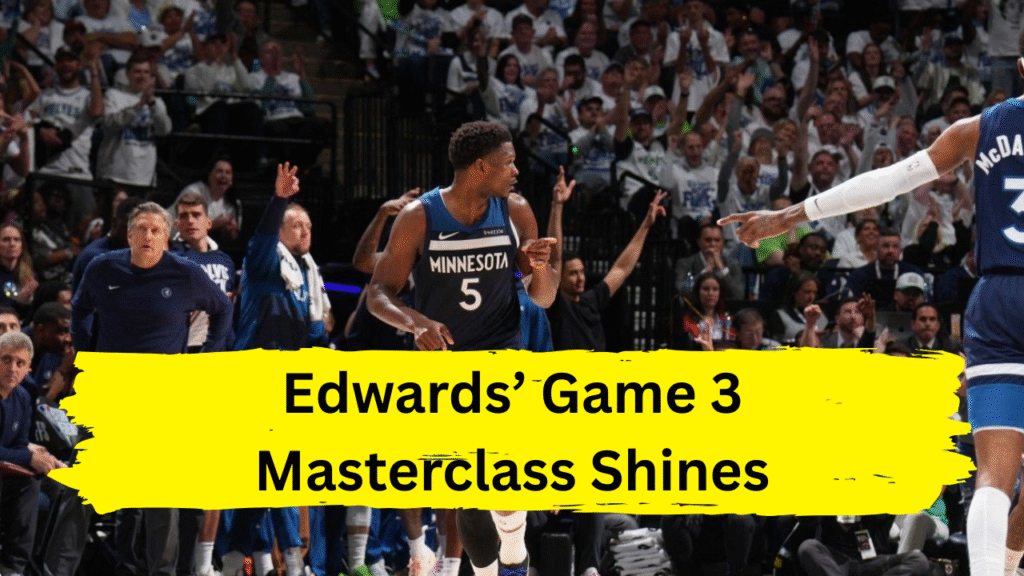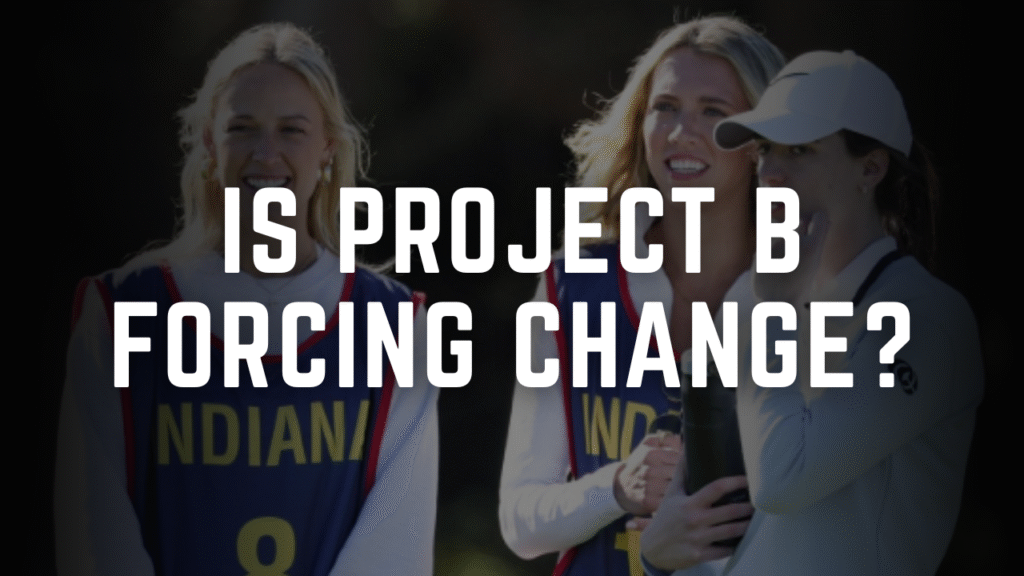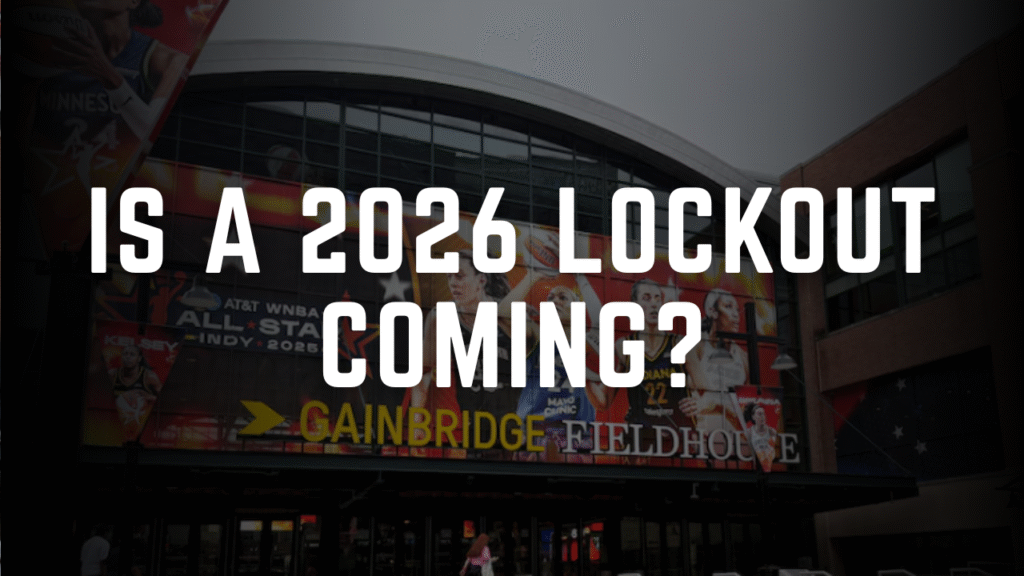Under the bright lights of the Target Center, Anthony Edwards didn’t just play basketball in Game 3 of the Western Conference Finals—he authored a manifesto. Facing elimination and the weight of a 2-0 series deficit, the 23-year-old phenom delivered a performance that blended artistry, ferocity, and a touch of defiance, propelling the Minnesota Timberwolves to a historic 143-101 rout of the Oklahoma City Thunder. This wasn’t merely a win; it was a statement—one etched in record-breaking stats, viral highlights, and a roaring chorus of fan reactions that echoed across the NBA landscape.
The Statistical Symphony
Edwards’ stat line read like a highlight reel frozen in time: 30 points, nine rebounds, six assists, and two steals—all in just three quarters of play. He shot a blistering 12-of-17 from the field (70.6%) and 5-of-8 from beyond the arc, a stark contrast to his 4-of-17 three-point struggles in Games 1 and 2 . His first-quarter explosion set the tone, outscoring the entire Thunder roster 16-14 while sinking six of his eight shots, including stepback threes and acrobatic drives that left defenders scrambling .
The Timberwolves’ offensive onslaught shattered records: their 72-point first half marked a franchise playoff high, while their 143 total points eclipsed any previous postseason output in team history . Edwards’ fingerprints were everywhere—directing fast breaks, threading passes through double teams, and igniting a defense that held MVP Shai Gilgeous-Alexander to a playoff-low 14 points on 4-of-13 shooting .
Highlights That Electrified the Arena
Edwards’ brilliance wasn’t confined to the box score. It unfolded in moments that turned the game into a spectacle:
- The Opening Salvo: A 34-14 first-quarter blitzkrieg, fueled by Edwards’ 16 points, including a pull-up three over Chet Holmgren and a coast-to-coast dunk that ignited the crowd .
- The Defensive Clinic: A chase-down block on Gilgeous-Alexander in transition, followed by a steal and behind-the-back assist to Julius Randle for a corner three—plays that showcased his two-way dominance .
- The Rookie Spark: With the game still competitive in the second quarter, Edwards’ chemistry with little-used rookie Terrence Shannon Jr. (15 points in 13 minutes) turned a 12-point lead into a 37-point laugher. Shannon’s back-to-back buckets, set up by Edwards’ gravity-defying drives, drew a standing ovation .
Even the Thunder’s top-ranked defense, which allowed just 107 points per game in the regular season, looked powerless. Minnesota’s 20 three-pointers and 49-31 rebounding edge painted a picture of a team operating at peak synergy—with Edwards as the conductor .
Fan Reactions: From Awe to Memes
As the final buzzer sounded, social media erupted. NBA Twitter crowned Edwards “DEMON TIME ANT” after a viral clip of him draining a contested three while staring down the Thunder bench . StatMuse highlighted his place among legends, noting he now trails only LeBron James, Kobe Bryant, Kevin Durant, and Luka Dončić in 30-point playoff games before age 24 .
Fans also reveled in the Thunder’s historic collapse. Memes flooded timelines, mocking Gilgeous-Alexander’s four free-throw attempts—a far cry from his 14.5 average in the series’ first two games—and Oklahoma City’s 42-point loss, the worst in franchise postseason history . One viral post quipped, “SGA had four free throws and lost by 40,” while another joked about the Wolves’ dominance: “Minnesota sports fans when their team is up forty points” .
Even the Timberwolves’ bench antics went viral. A photo of coach Chris Finch’s playbook, captioned “Found this on Finch’s desk,” humorously depicted a single scribble: “Let Ant cook” .
The Ripple Effect: Leadership Beyond the Scoreboard
What elevated Edwards’ performance from great to legendary was his intangible impact. After a profanity-laced outburst following Game 1’s loss drew criticism, he channeled his frustration into leadership. He rallied Julius Randle—benched in Game 2 after a dismal showing—with a private pep talk, resulting in Randle’s 24-point redemption . He also empowered role players like Shannon, whose 15-point eruption off the bench symbolized the team’s “next man up” mentality .
Defensively, Edwards set the tone by hounding Gilgeous-Alexander, denying him driving lanes, and forcing him into four turnovers. “We were cleaner around him,” Finch said, referencing Minnesota’s disciplined closeouts that limited SGA to four free throws—a drastic drop from his usual output .
A Series Rekindled, a Legacy Cemented
While Edwards downplayed the win—“We’re still down. It’s just one win”—the broader narrative shifted. The Thunder, owners of a league-best 68 regular-season wins, now face questions about their resilience. No team in NBA history has recovered from a 40-point playoff loss to win a title, a stat that looms over Oklahoma City’s locker room .
For Minnesota, Game 3 wasn’t just a survival tactic; it was a revelation. Edwards’ blend of humility (“I wasn’t playing like I should”) and swagger (“Shoot it as much as I can”) embodies a new era of leadership—one where joy and grit coexist . As the Wolves prepare for Game 4, the basketball world watches, wondering if this masterclass was a flash in the pan or the dawn of a dynasty.
In the end, Edwards’ Game 3 wasn’t just about stats or highlights. It was a reminder that in the crucible of the playoffs, legends aren’t born—they’re forged, one defiant dunk, one viral moment, and one roaring crowd at a time.


